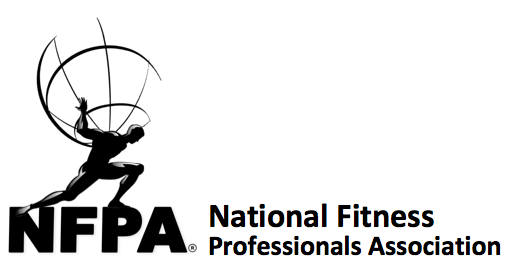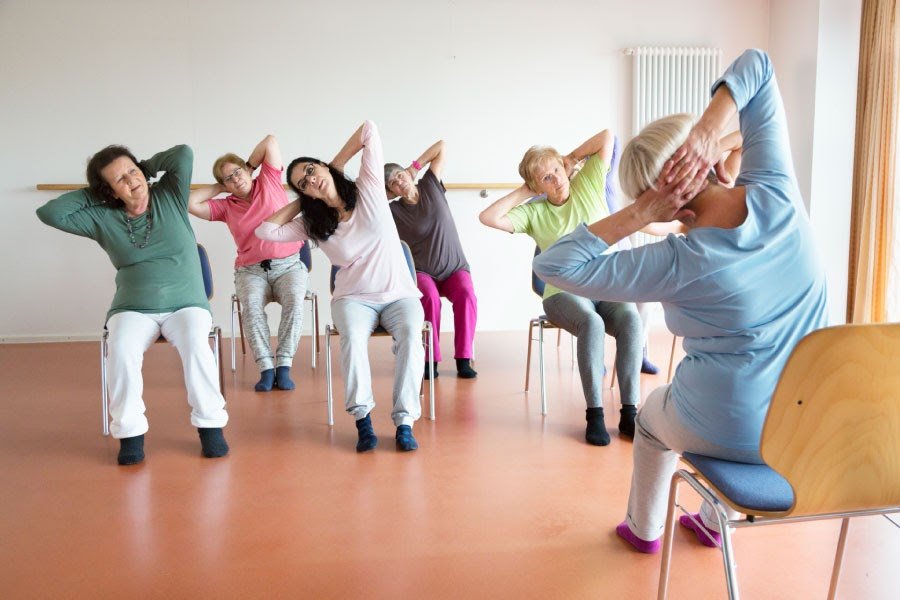CONTINUING EDUCATION courses
Credit Value: 1 CEC
Mindful Movement: Integrating Meditation and Exercise for Holistic Wellness
In the fast-paced world of modern living, finding balance and nurturing holistic wellness has become a significant priority for many individuals. As a response to this growing need, the concept of mindful movement has emerged, intertwining meditation and exercise to create a harmonious approach to overall well-being. This article delves into the trend of mindful movement, examining its benefits, potential risks, scientific foundations, practical applications, and concludes with insights into its promising potential.
The Pros and Cons of a Vegan Diet for Regular Exercisers
In recent years, the popularity of veganism has surged, driven by concerns for animal welfare, environmental sustainability, and potential health benefits. For individuals who engage in regular exercise, the decision to adopt a vegan diet requires careful consideration of its potential advantages and drawbacks. This article delves into the pros and cons of a vegan diet for those who lead active lifestyles.
The Importance of Sleep and Fitness
Sleep and fitness are two essential factors that greatly impact our overall health and well-being. In today's fast-paced world, where individuals often prioritize work, socializing, and various commitments, it's crucial to recognize the significance of sleep and fitness in maintaining a healthy lifestyle. Let's delve into the statistics and explore why these two elements are vital for our physical and mental health.
Power of Walking: Health Benefits, Fat Loss, and How to Make it a Weekly Habit
Walking is one of the simplest yet most effective forms of exercise. Whether you’re looking to improve your overall health, shed some pounds, or establish a consistent exercise routine, walking can be a game-changer. Unlike many other forms of exercise, walking is accessible to almost everyone, requires no special equipment, and can be easily incorporated into daily life. This article explores the numerous health benefits of walking, its impact on fat loss, and provides a weekly exercise program to help you begin and establish walking as a regular habit.
Credit Value: 2 CEC’s
Functional Fitness for Aging Gracefully
Functional fitness is a holistic approach to promoting healthy aging by focusing on strength, mobility, and functional capacity. Its benefits include improved independence, strength, balance, flexibility, and cognitive function. However, older adults should approach functional fitness with caution, seeking professional guidance and adapting routines to their individual needs. With a foundation in exercise science, functional fitness offers a practical solution to aging gracefully and maintaining a high quality of life.
The Power of Creatine: Unveiling Fitness Benefits for Males and Females
In the realm of fitness and exercise, finding effective supplements to enhance performance and results is a common pursuit. One such supplement that has gained substantial attention and recognition is creatine. While historically associated with bodybuilders and male athletes, recent research has highlighted its benefits for both males and females who engage in exercise. Let's explore the advantages of creatine for individuals of both genders, shedding light on its unique benefits for each.
Virtual Fitness Communities: The Rise of Online Workouts and Social Support
In the ever-evolving landscape of fitness and wellness, a transformative trend has emerged in recent years — the rise of virtual fitness communities. As technology continues to integrate into our daily lives, so too does its impact on how we approach exercise and stay connected with like-minded individuals. This article delves into the phenomenon of virtual fitness communities, exploring their benefits, potential risks, scientific foundations, practical applications, and more.
Powering the Sprint: Crucial Role of Calf Muscles in Sprinting
Sprinting, the epitome of speed and power in athletics, demands a combination of strength, technique, and explosive force. While athletes often focus on their quadriceps and hamstrings, the calf muscles, specifically the soleus and gastrocnemius, play an equally critical role in sprinting performance. This comprehensive 5000-word article explores the significance of calf muscles for sprinters, delving into the benefits, scientific foundations, and practical applications.
Exercise After ACL Surgery
Anterior cruciate ligament (ACL) injuries are one of the most common and debilitating injuries among athletes, especially in sports that involve cutting, pivoting, and sudden directional changes. Surgery to repair or reconstruct the ACL is often necessary for athletes who wish to return to high levels of competition. However, the journey from surgery to a successful return to play (RTP) is complex and requires a well-structured rehabilitation and training program. This article will explore the current research on ACL rehabilitation, focusing on the first 8 weeks post-surgery, which are crucial for setting the foundation for a successful return to sport.
Plantar Fasciitis: Causes, Treatment, and Preventative Exercises
Plantar fasciitis is a common foot condition characterized by pain and inflammation in the plantar fascia, the thick band of tissue that runs across the bottom of the foot, connecting the heel bone to the toes. This condition can significantly impact daily activities and athletic performance, making understanding its causes, treatments, and preventive measures essential.
Building Mental Resilience: Motivational Techniques for Personal Trainers
In the ever-evolving world of fitness, personal trainers are not just responsible for developing physical training programs; they also play a crucial role in fostering mental resilience in their clients. Mental resilience—the ability to adapt to stress, adversity, and change—is essential for clients aiming to achieve their fitness goals. This article explores various motivational techniques that personal trainers can employ to enhance their clients' mental resilience, supported by current research and psychological principles.
Enhancing Posture in the Senior Population: Effective Exercises and Training Programs
As we age, maintaining good posture becomes increasingly important for overall health and well-being. Poor posture can lead to a host of issues, including back and neck pain, decreased mobility, balance problems, and even impaired respiratory function. For seniors, these challenges can significantly impact quality of life, making it essential to incorporate posture-improving exercises into daily routines. This article explores the significance of posture in the senior population, reviews current research, and provides an 8-week exercise program designed to enhance posture.
Credit Value: 3 CEC’s
Chair Yoga: Gentle Yoga for Seniors with Limited Mobility
Yoga is a practice that has been cherished for its physical and mental benefits for centuries. While it is often associated with contortionist poses on yoga mats, there's a modified and accessible version known as "Chair Yoga" that caters to seniors with limited mobility. Chair Yoga brings the myriad benefits of yoga to those who may find traditional yoga poses challenging. In this article, we will explore the benefits, potential risks, scientific foundations, and practical applications of Chair Yoga for seniors.
The Gut-Brain Connection: How Nutrition Affects Mental Health in Athletes
The relationship between nutrition and physical performance has long been established, but recent scientific advances have shed light on another critical aspect of athlete well-being: the gut-brain connection. This article delves into the intricate link between nutrition, gut health, and mental well-being in athletes, exploring the benefits of a balanced diet on both physical and mental performance. It also provides practical applications for optimizing nutrition, along with a sample nutrition program, to enhance mental health in athletes.
High Intensity Pilates: Strengthening Core and More
Pilates has long been celebrated for its ability to improve flexibility, posture, and core strength. However, in recent years, a new trend has emerged within the realm of Pilates – High-Intensity Pilates. This rigorous form of exercise takes the foundational principles of traditional Pilates and amplifies them with added intensity and vigor. In this article, we will delve into the world of High-Intensity Pilates, exploring its benefits, potential risks, and practical applications.
Tabata Training: Unlocking the Power of HIIT Training
In the world of fitness, Tabata Training has emerged as a powerful and time-efficient method for improving cardiovascular health, boosting endurance, and enhancing overall fitness levels. Named after Dr. Izumi Tabata, a Japanese researcher who pioneered this method, Tabata Training has gained popularity for its ability to deliver remarkable results in a short amount of time. In this article, we will delve into the benefits, risks, scientific foundations, and practical applications of Tabata Training, providing you with a comprehensive understanding of this intense workout regimen.
Eating and Inflammation: Anti-inflammatory Diets for Injury Prevention
Inflammation is a natural response of the body to injury or infection. It plays a crucial role in the healing process, but when it becomes chronic, it can lead to a range of health issues, including heart disease, diabetes, and autoimmune disorders. As athletes, fitness enthusiasts, or anyone looking to maintain optimal health, understanding and managing inflammation is paramount. One effective approach is adopting an anti-inflammatory diet. We will explore the benefits, potential risks, and practical applications of anti-inflammatory diets for injury prevention.
Exercise After Knee Replacement
Knee replacement surgery, also known as knee arthroplasty, is a common procedure designed to relieve pain and restore function in severely diseased knee joints. While the surgery itself can lead to significant improvements in quality of life, the post-operative period is crucial for regaining mobility, strength, and overall function. Exercise plays a vital role in this recovery process, helping patients rebuild strength, enhance joint stability, and return to daily activities.
Credit Value: 4 CEC’s
Golf Strength Training Techniques: Enhancing Performance and Preventing Injuries
Golf, often perceived as a low-intensity sport, requires a unique combination of strength, flexibility, and endurance. As the game evolves, golfers are increasingly recognizing the importance of strength training to improve their performance, increase distance, and prevent injuries. This article explores effective strength training techniques for golfers, supported by current research, and presents two comprehensive training programs designed for beginners and transitioning golfers.
Bodyweight Training Unleashed: Innovative Calisthenics Progressions
In recent years, there has been a surge of interest in bodyweight training, particularly the field of calisthenics. Calisthenics is a form of exercise that utilizes one's own body weight to build strength, flexibility, and endurance. This article delves into the trend of bodyweight training, exploring its benefits, potential risks, scientific foundations, practical applications, and providing a sample weekly workout regimen.
Mastering Small Group Training: Effective Strategies for Instructing 4 or More Clients in a One-Hour Setting
Small group training (SGT) has gained significant popularity in the fitness industry, offering the perfect balance between personal attention and the energy of a group workout. For trainers, this format presents both opportunities and challenges. When instructing four or more clients simultaneously, it's essential to manage time effectively, ensure each client receives proper attention, and tailor the workout to meet diverse fitness levels. This article explores strategies for successful small group training, outlines a comprehensive 4-week beginner program, and provides a transition training program to ensure continuous progression.
Intermittent Fasting: Maximizing Performance and Health Benefits
In an era where diets and nutritional trends seem to come and go, intermittent fasting has emerged as a practice with remarkable staying power. While fasting isn't a new concept, its resurgence in recent years has been driven by a growing body of scientific research highlighting its potential health benefits and performance-enhancing effects. This article delves deep into the world of intermittent fasting, exploring its numerous advantages, potential risks, and practical applications to help you make informed decisions about incorporating it into your lifestyle.
The Science of Timing: Meal Timing Strategies for Peak Performance
In the pursuit of optimal health and peak performance, athletes, fitness enthusiasts, and even individuals seeking to lead a healthier lifestyle often focus on what they eat. However, an equally crucial aspect of nutrition that often goes overlooked is when they eat. The science of meal timing has gained significant attention in recent years, shedding light on how the timing of your meals can impact your energy levels, metabolism, and overall well-being.
The New Trainer: How to Begin with Clients
Becoming a fitness trainer is an exciting and rewarding career choice. As a new trainer, you'll have the opportunity to help clients transform their lives through strength training, conditioning, and nutrition. However, getting started can be daunting. This comprehensive guide will walk you through the essential steps of structuring training programs and providing nutritional guidance for your clients. We'll also provide sample programs for 2-day, 3-day, and 4-day training schedules to get you started on the right track.
TRX Training: Suspension Workouts for Total Body Conditioning
In the ever-evolving landscape of fitness, trends come and go. Some are fleeting fads, while others stand the test of time. TRX training, also known as suspension training, has firmly established itself as a mainstay in the world of fitness. With its roots in Navy SEAL training, TRX has gained popularity across gyms, fitness studios, and even home setups. In this comprehensive article, we'll delve deep into TRX training, exploring its origins, benefits, potential risks, scientific foundations, practical applications, and provide a sample program to get you started.
Pre-Menopausal and Menopausal Women and Exercise
Menopause is a natural biological process that every woman experiences, typically between the ages of 45 and 55. However, the transition can begin in the pre-menopausal stage, sometimes as early as in the late 30s. This stage is characterized by fluctuating hormone levels, leading to various symptoms such as weight gain, reduced muscle mass, decreased bone density, and mood swings. These changes can significantly impact a woman's overall health and well-being.
Credit Value: 5 CEC’s
Strength Training the Female Athlete: A Comprehensive Guide and Key Considerations
Strength training has long been an essential component of athletic preparation, helping athletes build power, endurance, and resilience. While traditionally viewed as the domain of male athletes, strength training has increasingly become recognized as vital for female athletes across all sports. However, it's important to acknowledge that females have unique physiological and hormonal differences that require specific considerations when designing and implementing strength training programs.
Strength Training for Pickleball
Pickleball, a fast-growing sport, combines elements of tennis, badminton, and table tennis, requiring agility, strength, and endurance. To excel in pickleball and reduce the risk of injury, strength training is essential. This article delves into the importance of strength training for pickleball, outlines potential risk factors, and provides a detailed 4-week beginner training program and a 4-week transition training program.
Shin Splints: Cause, Prevention, and Rehabilitation for Distance Runners
Shin splints, medically known as medial tibial stress syndrome (MTSS), are a common injury among runners, particularly those participating in cross country. This condition is characterized by pain along the inner edge of the shinbone (tibia) and is often caused by overuse or repetitive stress on the shinbone and the connective tissues that attach muscles to the bone.
Semiglutides and Exercise: A Comprehensive Guide
Semiglutides, particularly Ozempic, have gained significant attention in recent years as a medication primarily used for managing type 2 diabetes. However, its benefits extend beyond glucose regulation, leading to its increasing popularity for weight management. With its growing use, questions have arisen regarding the interaction between semiglutides and exercise, particularly strength training. This article explores the current research, discusses the pros and cons of using semiglutides like Ozempic, and provides guidance on starting a strength training regimen while on the medication.































